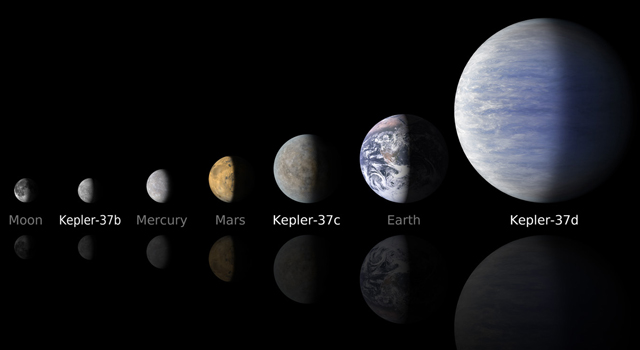Newly discovered planet is the size of the MOON. Pluto is like, indignant.

The Space Wizards have found us a new exoplanet, and this one is fucking small. How small? We’re talking about as small as the round mound of Cheese that we like to call the Moon. Space Cheese. Pluto is probably pretty upset about this news, as it continues to deny the fact that its demotion wasn’t purely based on its size. Give it up, Pluto!
The Verge:
NASA’s Kepler space telescope has discovered a planet roughly the size of our Moon, the smallest one yet seen around a Sun-like star. Kepler-37b, as it’s known, is roughly 210 light-years from Earth, orbiting its star every 13 days at less than one-third of the distance between the Sun and Mercury. Besides being an interesting find, it’s a sign that NASA’s detection techniques have advanced since the first exoplanets were discovered. Early research outside our solar system turned up gas giants closer to Jupiter’s size than Earth’s, with the first “unquestionably rocky” exoplanet — though not the first to be potentially rocky — discovered by the Kepler team in early 2011.
Since then, researchers have found a trove of smaller planets, and as detection improves, it’s likely they’ll discover more — while we might have previously suspected exoplanets of all sorts were common, we’re now getting harder proof. Kepler-37b itself is near two other small planets, one three-quarters the size of Earth and another twice as big as our world. All three orbit close to their sun, which means their surfaces are probably formidably hot, and 37b isn’t believed to have an atmosphere; they’re distinctly not in the “habitable zone” that’s the grail of Earth-like planet searches.
The Kepler team determines planet sizes by extrapolating from dips in the brightness of their home star as they cross it, making the estimates potentially unreliable. In this case, though, NASA says it’s confident in its assessment, especially because the star is particularly bright and ideal for research. “The fact we’ve discovered tiny Kepler-37b suggests such little planets are common,” says Jack Lissauer of the Ames Research Center, “and more planetary wonders await as we continue to gather and analyze additional data.”



